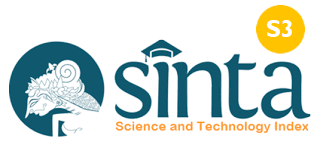Eksistensi Pura Jagat Nata Bagi Masyarakat Desa Pakraman Rendang Kecamatan Rendang Kabupaten Karangasem (Kajian Pendidikan Agama Hindu)
Abstract
The uniqueness of the Jagatnata Temple is the Pura structure, and the history of the temple. Based on initial observations stated, that Jagat Nata Pura is estimated to have been established since prehistoric times. Evidenced by the many statues found, and it is estimated that the statue originated from that era. Besides that, in the Jagat Nata Pura there is also a statue whose existence is without being made by humans, but there are no scenarios. The statue is noetic through a banyan tree in the main area of the Mandala Pura Jagat Nata. The existence of Jagat Nata Pura is inseparable from the praising process in Jagat Nata Temple which is held every six months, namely on the Buda Wage Kelawu day with a series of mepiuning ceremonies, Nuwur Tirtha, Idha Bhatara Nyejer, maketis and melukat, joint worship (kramaning sembah), then closed with nunas tirtha wangsuh on and panyineban. The functions of the Jagat Nata Temple include the Religious Function, namely, the appreciation of God manifested in the form of pralingga (statue) which is used as concentration of mind, the Social Function that is carried out in mutual cooperation, together, the Aesthetic Function, namely reringgitan, folds, plaits, forms of snacks, fruits are arranged in such a way that eventually forms a pillow. Values of Hinduism Education in Jagat Nata Temple For Communities in Pakraman Rendang Village, Rendang District, Karangasem Regency include Tattwa Education Values which can guide the minds of the Rendang community in deepening their belief in God Almighty to ask for salvation, fertility, Ethical Education Values that is based on the Tri Kaya Parisudha concept (thinking, saying, and behaving well), Educational Values educates the public to continue carrying out ritualistic activities, as an effort to get closer to Ida Sang Hyang Widhi Wasa.
References
Iqbal, Hasan. 2002. Pokok-Pokok Penelitian dan Aplikasi. Bandung : Ghalia Indah.
Mardawa, I. M. D., Sudarsana, I. K., & Mahardika, I. G. N. A. W. (2018). Penggunaan Banten Daun Di Pura Dadia Alangkajeng Di Kelurahan Lelateng Kabupaten Jembrana (Kajian Nilai Pendidikan Agama Hindu). Jurnal Penelitian Agama Hindu, 2(1), 47-51.
Moleong, Lexy. I. 2001. Metodologi Penelitian Kualitatif. Bandung : Remaja Rostakarya.
Raka, I. N., & Sudarsana, I. K. (2018). Munculnya konversi Agama dari Hindu ke Kristen. Jayapangus Press Books.
Saputra, I. K. P., Sudarsana, I. K., & Mahardika, I. G. N. A. W. (2018). Tradisi Nunas Kecap Mandi Di Pura Dalem Gede Desa Pakraman Galiran Di Kabupaten Bangli (Perspektif Pendidikan Agama Hindu). Jurnal Penelitian Agama Hindu, 2(1), 13-18.
Soekmono, 1973. Pengantar Sejarah Kebudayaan Indonesia Jilid II. Yogyakarta : Yayasan Kanisius
Downloads
Published
How to Cite
Issue
Section
License
An author who publishes in the Cetta : Jurnal Ilmu Pendidikan agrees to the following terms:
- Author retains the copyright and grants the journal the right of first publication of the work simultaneously licensed under the Creative Commons Attribution-ShareAlike 4.0 License that allows others to share the work with an acknowledgement of the work's authorship and initial publication in this journal
- Author is able to enter into separate, additional contractual arrangements for the non-exclusive distribution of the journal's published version of the work (e.g., post it to an institutional repository or publish it in a book) with the acknowledgement of its initial publication in this journal.
- Author is permitted and encouraged to post his/her work online (e.g., in institutional repositories or on their website) prior to and during the submission process, as it can lead to productive exchanges, as well as earlier and greater citation of the published work (See The Effect of Open Access).
Read more about the Creative Commons Attribution-ShareAlike 4.0 Licence here: https://creativecommons.org/licenses/by-sa/4.0/.





